Niklas Heidloff
Development of reactive applications with Quarkus
#1about 4 minutes
Comparing reactive and imperative code performance
A sample application demonstrates how reactive REST endpoints and web UIs can be twice as fast and more resource-efficient than traditional synchronous code.
#2about 2 minutes
Core principles of the reactive manifesto
Reactive systems are defined by being elastic for scalability, resilient against failures, and responsive for fast user feedback.
#3about 3 minutes
The learning curve of reactive programming in Java
Reactive programming requires a different mindset for concepts like chained methods and callbacks, which can make initial learning and debugging more challenging.
#4about 5 minutes
Exploring the Quarkus reactive technology stack
The stack is built on Quarkus for performance, which integrates MicroProfile for microservice APIs, Vertex as the reactive engine, and Kubernetes for deployment.
#5about 6 minutes
Building non-blocking APIs with CompletionStage
Reactive endpoints use CompletionStage and CompletableFuture to immediately return a future, preventing the main thread from blocking while processing requests.
#6about 4 minutes
Handling exceptions and timeouts asynchronously
Instead of try-catch, reactive code uses methods like 'exceptionally' to handle errors and 'orTimeout' to prevent long-running operations from blocking resources indefinitely.
#7about 2 minutes
Calling microservices asynchronously with MicroProfile
The MicroProfile REST Client simplifies asynchronous communication between services by letting you define a Java interface that handles networking and serialization automatically.
#8about 6 minutes
Streaming data to web clients with SSE
MicroProfile Reactive Messaging consumes events from Kafka, and a Server-Sent Events (SSE) endpoint streams these updates directly to the browser for a real-time UI.
#9about 2 minutes
Exploring the open source sample project on GitHub
The sample project is available on GitHub with documentation and setup scripts to help you quickly run and learn from the reactive microservices examples.
#10about 5 minutes
Deploying reactive apps and key takeaways
Managed platforms like IBM Cloud and OpenShift simplify deployment, and open source tools like Quarkus make building efficient, reactive systems accessible to all developers.
Related jobs
Jobs that call for the skills explored in this talk.
Java / Kotlin Developer in einem Cloud-Native-Stack

PROSOZ Herten GmbH
Herten, Germany
Intermediate
Senior
Featured Partners
Related Videos
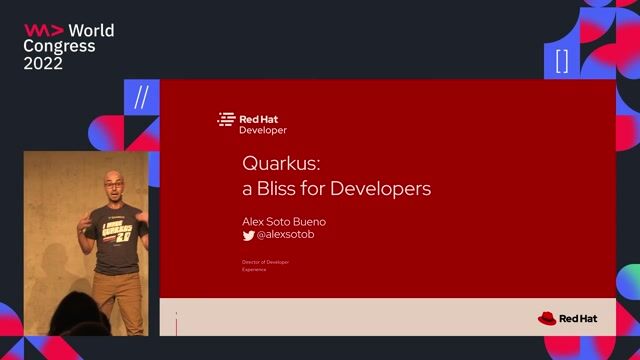 44:40
44:40Quarkus. A Bliss for developers
Alex Soto
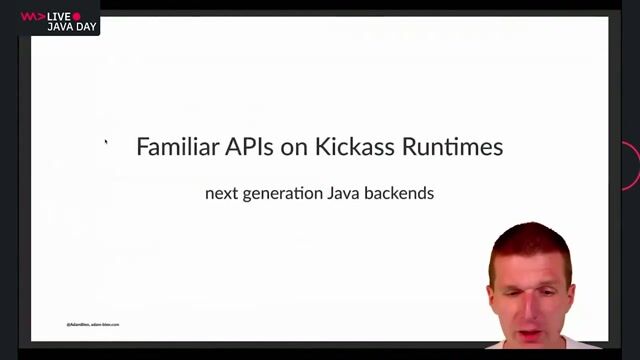 37:55
37:552021: Familiar APIs on Kickass Runtimes #slideless
Adam Bien
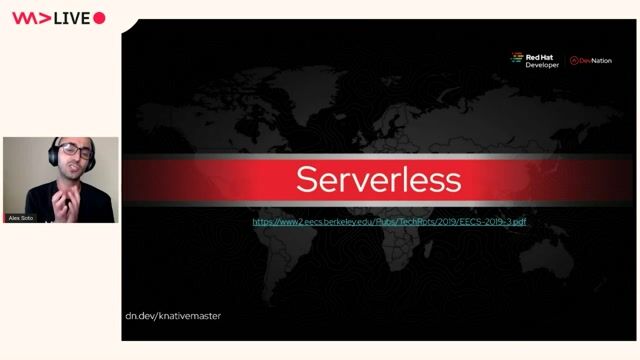 41:04
41:04Serverless-Native Java with Quarkus
Alex Soto
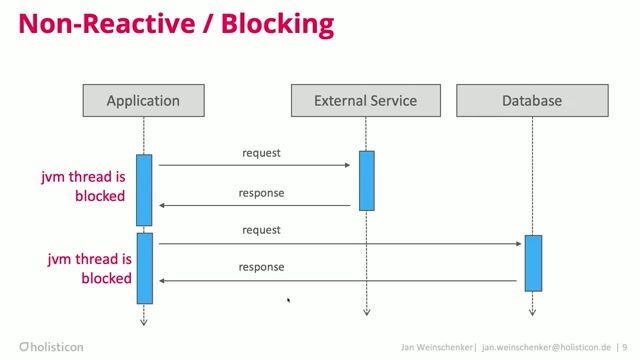 25:41
25:41Side-by-Side: Reactive vs non-reactive Java
Jan Weinschenker
 27:11
27:11Serverless Java in Action: Cloud Agnostic Design Patterns and Tips
Kevin Dubois & Daniel Oh
 28:12
28:12Is reactive the new black? Imperative vs. reactive programming with Quarkus
Tatiana Chervova
 28:21
28:21Developer Joy with Quarkus
Daniel Oh
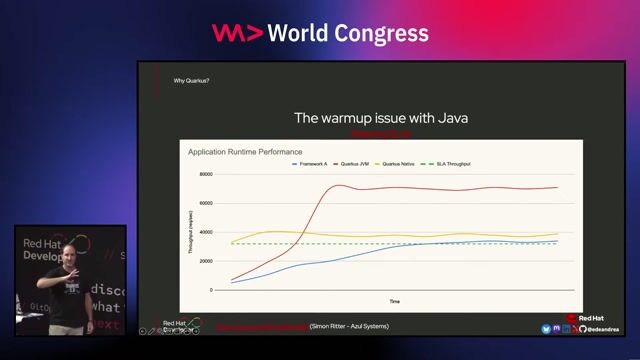 30:15
30:15Like Spring, but Faster: The new Java Jedi
Eric Deandrea
From learning to earning
Jobs that call for the skills explored in this talk.
Senior Full-Stack Engineer (Java Quarkus/Angular, Kafka, Microservices)
Callista Group
Basel, Switzerland
Senior
Java
Kafka
Angular
Microservices
Backend Java Spring Developer
Quantion
Municipality of Madrid, Spain
Java
Spring
Docker
Kubernetes
Continuous Integration
Développeur Java - React Js - Quarkus - Senior - Niort H/F
Mosica
Canton de Niort-3, France
Remote
€50K
Senior
Java
React
Unit Testing
Software Engineer Java + React | Remoto
knowmad Mood
Municipality of Madrid, Spain
Remote
Java
JUnit
Scrum
React
+3
Developpeur Java Quarkus - Vue Js H/F
ENOVA Consulting
Canton de Valbonne, France
Remote
Junior
GIT
Java
JIRA
JUnit
+11
Développeur Java - Quarkus - React - Build - Confirmé - Novembre - Février H/F
Mosica
Canton de Nantes-1, France
Remote
Intermediate
GIT
Java
JIRA
Maven
+7

